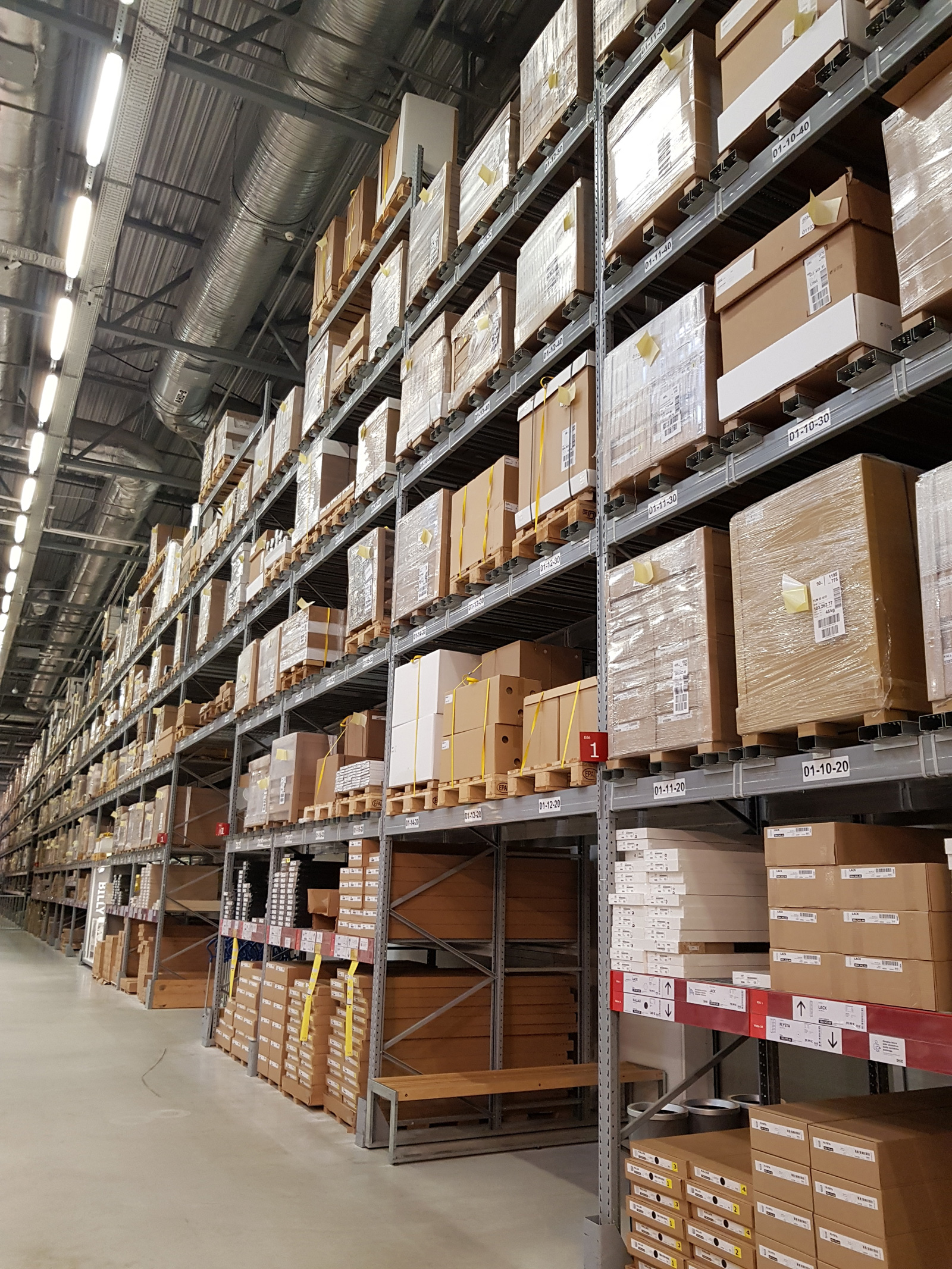AUTOMATED TRACEABILITY AND READING
Identification and Labeling
At Tech id, we design solutions to optimize and automate your identification process using the most appropriate technology according to the sector to which it belongs and, therefore, the intrinsic characteristics of the same, as well as the subsequent processes during the journey of the product or the logistics unit in the established supply chain.
These solutions are always based on the correct management of the data generated in the process and their consistent integration into corporate or management systems. Thus, in the case of the identification process, the management system can know in real time the production or generation of new products (SKUs) and/or groupings and logistic levels.
Correctly identifying the goods and correctly managing the associated information is the beginning of optimization and possible automation downstream in the supply chain.
At Tech id, we design solutions to optimize and automate your identification process using the most appropriate technology according to the sector to which it belongs and, therefore, the intrinsic characteristics of the same, as well as the subsequent processes during the journey of the product or the logistics unit in the established supply chain.

Physical Identification of Packages and Units
The first essential step is to physically identify the logistics unit or package. For this purpose, there are different ways to treat it depending on the technology used.
In each company and/or sector, both the automation or not of the identification process and the identification technology selected will be determined by the logistical level required to identify, the volume of identifications, the cost of the product, the additional information to be incorporated, etc.
Manual identification is typically supported by thermal label printers and RFID identification tags. These allow the printing of labels to be used on sales units, packages and pallets.
Mobile printers allow employees to print labels at the point of application, reducing travel time. Industrial printers are designed to work in harsh, 24/7 environments.



Experts in labeling strategies
Similarly, traditional automatic labeling systems are still in use today, whether labeling finished products, sales units or logistic units, with traditional barcodes, two-dimensional barcodes, RFID tags, etc.
The idea of automating the identification and/or labeling process is to guarantee the identification of the products in order to, downstream in the supply chain, be able to optimize the subsequent processes, whether performed by the same company or not. This allows sharing and integrating different processes and even companies into a global and optimized supply chain.
In addition to logistics unit identification, in many cases it is necessary to incorporate additional or incremental information so that this information flows throughout the supply chain and/or between companies and in an automated manner. That is why for years, GS1 has designed multiple codes (one-dimensional, two-dimensional, as well as RFID chip encoding,…) that incorporate information needed at some link in the chain.
Benefits of Automated Identification and Labeling
-
Possibility to automate downstream processes
Being able to have the products and the logistic units that compose it offers the possibility to work on other downstream automatisms.
-
Real-time information
Obtain in the corporate or management systems all the information related to the identified goods or items to be traced. Any strategic or executive decision requires working with the best available information.
From a correct identification and automated management of the information it is possible to work on dashboards, KPI's, etc. -
Greater security in the management and decision making process of the company.
The automated digitization in real time of the information generated by the process itself ensures that this information is complete and accurate, in addition to having it available in the appropriate systems, whether WMS or ERP. In this way it is possible to make decisions, whether executive or strategic, in a secure way, offering the possibility of working with dashboards, KPI's, etc.
-
Optimizes the planning of the rest of the processes
The digitization of the execution of processes in real time in your management systems or corporate systems offers the possibility of reviewing the planning and prioritization of the tasks to be performed based on reality and not on an initial planning.
-
Traceability
The start of any automated traceability management is to have all the elements to be traced perfectly identified.
-
Collateral information
The possibility of automating the identification of any product or element offers the possibility of complementing it with additional information beyond the identification itself. Thus, depending on the technology used, it is possible to add information in:
- The same identification code (two-dimensional codes) is often used to share information between different companies in the same supply chain.
- RFID chip. It is usually used to share information between different companies in the same supply chain and if we also want this information to be dynamic, that is to say that it can vary depending on the status or position in the supply chain.
- In the information systems or management systems that store additional information to be used in other processes (usually within the company itself).
-
Possibility to automate downstream processes
Being able to have the products and the logistic units that compose it offers the possibility to work on other downstream automatisms.
-
Real-time information
Obtain in the corporate or management systems all the information related to the identified goods or items to be traced. Any strategic or executive decision requires working with the best available information.
From a correct identification and automated management of the information it is possible to work on dashboards, KPI's, etc. -
Optimizes the planning of the rest of the processes
The digitization of the execution of processes in real time in your management systems or corporate systems offers the possibility to review the planning and prioritization of the tasks to be performed based on the reality and not on an initial planning.
-
Greater security in the management and decision making process of the company.
The automated digitization in real time of the information generated by the process itself ensures that this information is complete and accurate, in addition to having it available in the appropriate systems, whether WMS or ERP. In this way it is possible to make decisions, whether executive or strategic, in a secure way, offering the possibility of working with dashboards, KPI's, etc.
-
Traceability
The start of any automated traceability management is to have all the elements to be traced perfectly identified.
-
Collateral information
The possibility of automating the identification of any product or element offers the possibility of complementing it with additional information beyond the identification itself. Thus, depending on the technology used, it is possible to add information in:
- The same identification code (two-dimensional codes) is often used to share information between different companies in the same supply chain.
- RFID chip. It is usually used to share information between different companies in the same supply chain and if we also want this information to be dynamic, that is to say that it can vary depending on the status or position in the supply chain.
- In the information systems or management systems that store additional information to be used in other processes (usually within the company itself).
May we help you?
- +34 91 430 47 82
- info@tech-id.com
Telephone: 039 51 58 592
E-mail: info@tech-id.com
Address: Fuencarral, 44
28018 Alcobendas (Madrid)
Phone: +34 6 17 46 02 27
E-mail: info@tech-id.com
Address: Calle Calatrava 23, Barcelona
Phone: +39 011 18 98 3679
E-mail: info@tech-id.com
Address: Via Migliarone, 21/A
10091 – Alpignano (TO)
Phone: +39 039 51 58 592
E-mail: info@tech-id.com
Address: Via Berlinguer, 18
20872 – Cornate d’Adda (MB)
Telephone: 039 51 58 592
E-mail: info@tech-id.com
Address: Fuencarral, 44
28018 Alcobendas (Madrid)
Phone: +39 011 18 98 3679
E-mail: info@tech-id.com
Address: Via Migliarone, 21/A
10091 – Alpignano (TO)
Phone: +39 039 51 58 592
E-mail: info@tech-id.com
Address: Via Berlinguer, 18
20872 – Cornate d’Adda (MB)
Find the solution to automate and optimize your processes and integrate all your corporate information. Ask us and together we will analyze your case.



